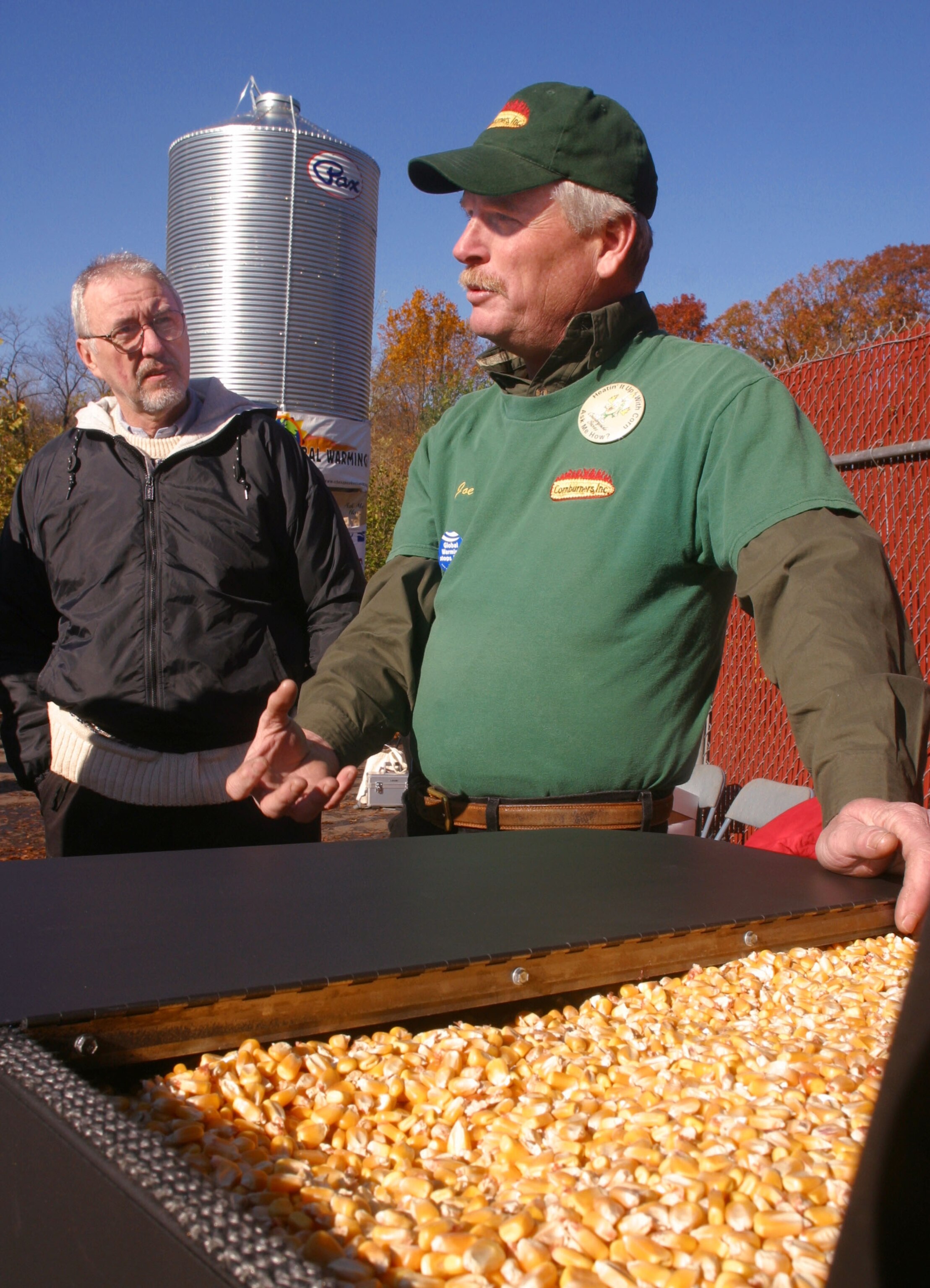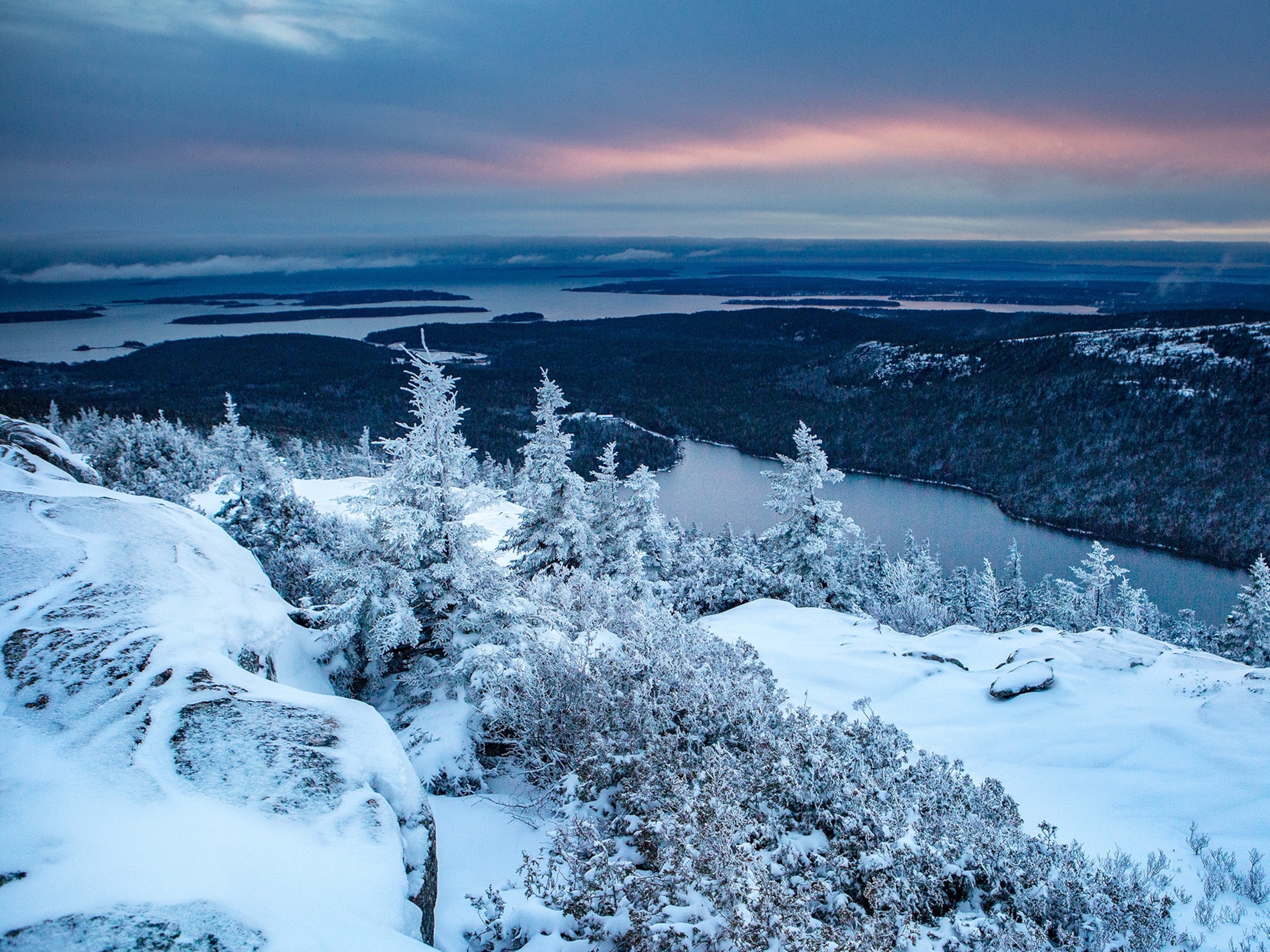
Corn for Home Heat: A Green Idea That Never Quite Popped
Burning kernels provides clean energy, but it takes muscle and increasingly more cash.
Takoma Park, Maryland—On an exceptionally frigid day in this Washington, D.C., suburb, a modest black stove in the Ikle-Khalsa family's living room was keeping the house warm. Every few seconds, it emitted a low grinding sound as a motor pushed more fuel into the fire.
The stove runs on dried corn kernels, which Sat Jiwan Ikle-Khalsa hauls by the bucketful from a communal bin a mile and a half away. He manages a small cooperative where members pay a fee to access the hopper, which sits on city land, and use an honor system to record their withdrawals.
The Save Our Sky co-op bills corn as an inexpensive heat source that's low in heat-trapping carbon emissions and supports a local farmer. The group was founded in 2002 with the idea that "I can save money, and I can do good for the environment," says Ikle-Khalsa.
The notion befits Takoma Park, a self-declared nuclear-free zone that also has a natural food co-op, a free mulch pile, and no shortage of wind chimes. For Ikle-Khalsa, a tennis instructor and environmentalist who has also put in solar panels, rain cisterns, and a food garden that takes up a good deal of his front yard, burning corn is another way to detach from fossil fuels.
Still, the corn-heat market is a tiny one that is likely to get even tinier. Corn isn't as cheap as it was 13 years ago, and new regulations from the U.S. Environmental Protection Agency might make it more difficult for people to buy the special stoves to burn it.
"Membership has tailed off a little bit," Ikle-Khalsa says of his co-op, which has a second location in Mt. Rainier, Maryland, and is down to about 40 members from a high of 70. "Natural gas prices went down, and corn prices went up."
Warming Up to Renewable Heat
A simple corn stove is relatively easy to maintain, Ikle-Khalsa says, and he hasn't had to deal with many repairs since installing it in 2004. The exhaust that gets funneled outside is nearly invisible—and not unpleasant on the breeze, if you like the smell of corn.

The interest in alternatives to fossil-fuel heat isn't confined to green types. It attracts everyone, "from the survivalists to the hippies living in yurts to a huge number of middle-class people who just want to go to the hardware store and get a good stove, because they're desperate to avoid $4,000 oil bills," says John Ackerly, president of the Alliance for Green Heat and a neighbor of Ikle-Khalsa's. (See related, "Quiz: What You Don't Know About Wood Energy.")
Back in the early 2000s, as oil prices climbed ever higher, it made sense that the world's number one producer of corn would see an interest in using cheap kernels for heat. But corn prices have nearly doubled since then, whereas the availability of solar-leasing programs and cheaper natural gas has increased.
The Takoma Park co-op buys corn from a farmer in Mount Airy, Maryland, who also sells it as feed. Ikle-Khalsa spends about $150 a month to keep his three-bedroom home at around 68°F (20°C)—sometimes a few degrees lower in extreme cold. The stove itself can cost $1,500 or more.
That's not necessarily cheaper than gas or electric heat right now, and it's definitely not as convenient. Heating a 1,900-square-foot home almost entirely with corn takes about a bucket a day, according to Ikle-Khalsa.
Given that a bucket weighs about 40 pounds and the co-op doesn't offer home delivery, it's not an ideal option for the lazy or physically impaired. The kernels need dry storage and protection from pests, and the stove produces ash that must be removed daily (though on the plus side, the ash is compostable).
Corn is just one choice, though, for a range of stoves now on the market. A long way from the good old cast-iron furnace, these modern appliances can burn fuels including wood, biomass pellets, and even cherry pits.
Particularly in the Northeast, where many have relied on oil heat, wood is on the rise. Burning it in pellet form using a high-efficiency stove costs about the same as or a bit more than corn, and the fuel can be bought in bulk at places such as Home Depot and Walmart. (See related stories: "Wood Stove Contest Seeks to Fire High-Tech Solutions for Smoke" and "Winning Wood Stove Designs Announced.")
A Dwindling Niche?
Ackerly says that while there aren't official numbers on how much corn gets used for heat, it's likely well below one percent. Still, he says, "I really believe using corn for heat is one of the best things corn can be used for."
He argues that ethanol is a far less efficient way to get energy from the plant, and he dismisses the argument that food shouldn't be used as fuel, when so much corn goes to cattle feed and syrup.
"Whether you're trying to fatten up cows or fatten up American kids, either way it's a very poor use of a potentially very valuable crop," Ackerly says.
Regardless, the use of corn for heat isn't likely to grow anytime soon. Lacking test data for corn stoves, the EPA left them out of emissions standards for new residential heaters finalized in February. That means such stoves can't be government certified, making them ineligible for sale in states such as California and Washington. It also discourages manufacturers from building better corn stoves.
In general, new standards that encourage better stoves are good for consumers, Ackerly says, but ultimately "corn may just be a casualty" of a policy that encourages efficient burning of wood. (Related: "High Fuel Costs Spark Increased Use of Wood for Home Heating.")
Ikle-Khalsa says he'd consider switching to wood pellets if and when his current stove peters out. What if interest in the corn co-op peters out as well?
He seems unperturbed by the idea—especially, he says, if corn gets pushed out by cleaner wood pellet stoves. In the meantime, he'll keep picking up kernels at the town hopper, 20 buckets at a time.
On Twitter: Follow Christina Nunez and get more environment and energy coverage at NatGeoGreen.
The story is part of a special series that explores energy issues. For more, visit The Great Energy Challenge.








